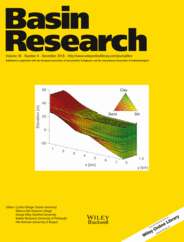
Full text loading...
 , Frank J. Peel1, Michael R. Hudec1, Ian O. Norton2
, Frank J. Peel1, Michael R. Hudec1, Ian O. Norton2
Recent subsalt petroleum discoveries associated with rifted‐margin salt basins have piqued interest in the presalt geology of the Gulf of Mexico margin. Available subsurface data does not uniquely constrain the subsalt geometry, so creating an interpretation of the crustal architecture requires the application of geological models for crustal extension and breakup. However, published interpretations of the nature of the transition from continental rifting to seafloor spreading range from magma‐rich to magma‐poor. To address this uncertainty, we present 2D forward kinematic models for crustal configurations generated by diverse models (symmetric extension, depth‐dependent extension, and volcanic extension). Through a series of conceptual balanced cross‐sections grounded in a ~600 km 2D seismic line from the NE Gulf of Mexico, we demonstrate the implications of each model for the limit of oceanic crust, basement morphology, crustal architecture, and hydrocarbon prospectivity. We discuss evidence for the dominant crustal processes, including geodynamic factors and structural and stratigraphic observations. Based on our observations and the geologic history, we favour an asymmetric, magma‐poor to ‐intermediate margin interpretation for the NE Gulf of Mexico, but suggest that the degree of volcanic input and width of the ocean‐continent transition zone may vary along strike. The along‐strike variability highlights the importance of understanding all potential presalt crustal configurations, their key features, and their implications. With increased data availability on the presalt geology in the Gulf of Mexico the relevance of these scenarios can be assessed, allowing development of comprehensive geodynamic and tectonic models of the margin and consideration of petroleum system elements in the presalt sequence.

Article metrics loading...

Full text loading...
References


Data & Media loading...
Supplements

